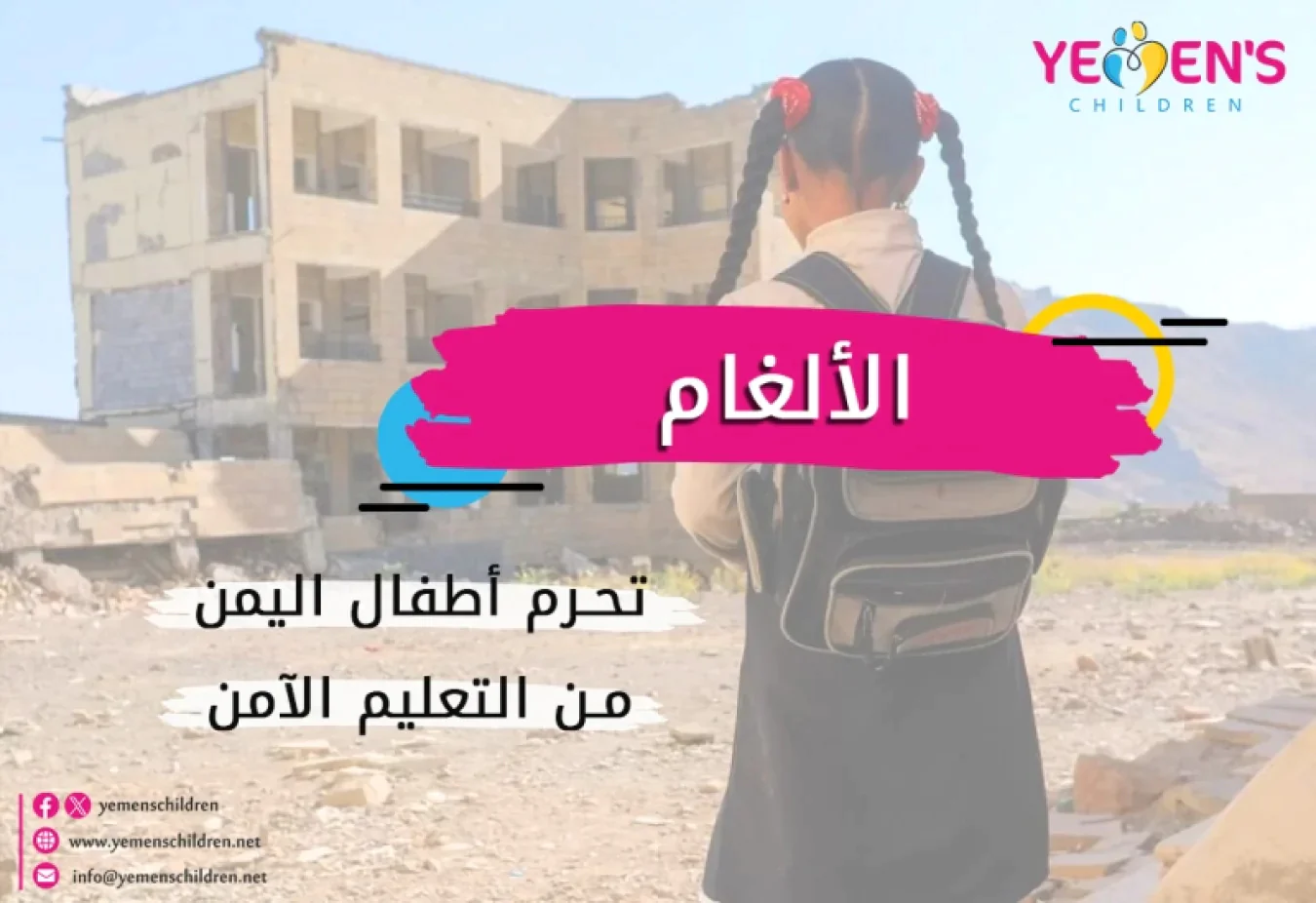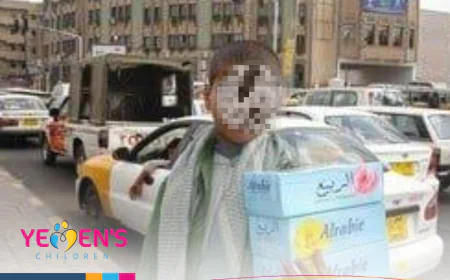Mines deprive Yemeni children of a safe education
Mines deprive Yemeni children of a safe education

yemenschildren Platform - Special Report
“When we returned to school, the atmosphere was ominous; there were landmines inside the school and on the way to it. The danger was so great that even the dog that entered the classroom was blown away by a landmine. The walls were painted with messages warning about the danger of landmines. No wonder We feel afraid and unsafe.”
This is what Issam (12 years old), a Yemeni student in a school “deeply affected by the war,” said in an interview with Save the Children.
While Lina (12 years old), a student in the same school, talks about the difficult conditions that students face due to the presence of landmines. Regarding the situation of her school, she said: “It has been a long time since they came and planted mines, and unfortunately some people walked on the road and trampled on them, may God have mercy on them.”
The war destroyed parts of Issam and Lina's school, leaving only six classrooms in the damaged building that can be used by students. Landmines are a constant danger inside and on the way to school.
Despite these challenges, both Issam and Lina are determined to succeed and aspire to become dentists, according to the organization.
Devastating effects
Save the Children, which has been working in Yemen since 1963, describes the effects of landmines and explosives on Yemeni children as “devastating” in the short and long term.
As a result, it issued a report in 2023 entitled “Monitoring Our Every Step: Yemen’s Children’s Deadly Legacy of Explosive Ordnance,” in which it revealed “an alarming rise in child casualties due to explosive ordnance in Yemen between January 2018 and November 2022.”
The report explained that “landmines and unexploded ordnance caused at least 657 incidents of killing and maiming of children - representing 1 in every 5 child victims during the reporting period.” He explained that the number of victims of landmines and unexploded ordnance constituted 7% of the total child victims in 2018, and rose to more than half in 2022.
These incidents of killing and maiming are one of the six grave violations against children and armed conflict that the United Nations monitors and reports on on an ongoing basis.
Save the Children said in the report that eight years of war, coupled with decades of historic conflict in Yemen, have left “a deadly legacy of explosive ordnance, including landmines, across the country – threatening children’s lives, childhoods and futures.”
Impeded access to education
Landmines affected the educational process in Yemen in its three pillars (school, teacher, student). According to the Save the Children report, “school children, teachers and education staff have been killed and maimed at or on the way to school, while many are left in constant fear of attending.”
The report noted that access to many schools had become "inaccessible after being exposed to severe mines or destroyed by landmine explosions." Pointing out that the presence of explosive ordnance in and around schools leads to “disrupting children’s access to safe, high-quality education, and may force them to leave school in the long term.”
Leakage and weakness
Save the Children reported that five children it spoke to had dropped out of school “due to complications from their injuries or their inability to walk after amputation.” Meanwhile, “Children who survive explosive ordnance, including landmines, may be forced to leave school later, due to the required recovery period and the financial burden on families for rehabilitation.”
According to the report, the injuries that children are exposed to due to mines affect their ability to learn, especially since they did not receive any official support from the school.
Below are examples of cases of injuries suffered by children as a result of mines and how they affected their abilities in academic achievement. We republish them as stated in the Save the Children report:
A 13-year-old boy, who was injured by shrapnel in the body and face, was described as unable to understand the teacher at school. Others also reported that ongoing complications from their injury sometimes prevented them from going to school, meaning they needed extra help with writing and revising.
Girl, 8 years old: I can no longer write because my right hand was amputated. When I'm at school, some students at school laugh at me.
Girl, 9 years old: My left eye was affected and my fingers were cut off. I can no longer study because my eye hurts, and even the other eye is affected. I remember before my injury, I was getting an excellent grade, and my ranking was among the top.
Risks and recommendations
In its report, Save the Children points out risks that may occur to those affected by mines in schools, including that “insufficient awareness of disabilities and the long-term effects of injuries among teachers and their fellow students may lead to discrimination, isolation, and dropping out of school.”
Also, “not attending school may increase the risk of children engaging in livelihood activities, such as herding livestock and fetching firewood – which in turn increases their risk of exposure to explosive ordnance, including landmines.”
The organization stresses the need for “national education plans and policies to include activities that promote inclusion and facilities for child survivors and support safe and quality education.”
Regarding the responsibility for this situation, Save the Children says that despite the “de facto authorities” signing the United Nations action plan in April 2022 to end and prevent attacks on schools, and other grave violations of children’s rights. The internationally recognized government also supported the Safe Schools Declaration in 2017, and its commitment to protecting education from attacks and limiting the use of schools for military purposes, but “only little progress has been made in implementing these commitments.”
The organization recommended that the “de facto authorities” and the government “immediately stop using mines and fulfill all obligations of the Anti-Personnel Mine Ban Treaty, including stopping mine production, clearing mined areas, and supporting the care, rehabilitation and reintegration of child victims.” It recommended ensuring that those responsible for harming children are held accountable, Ensure that victims receive appropriate redress.










